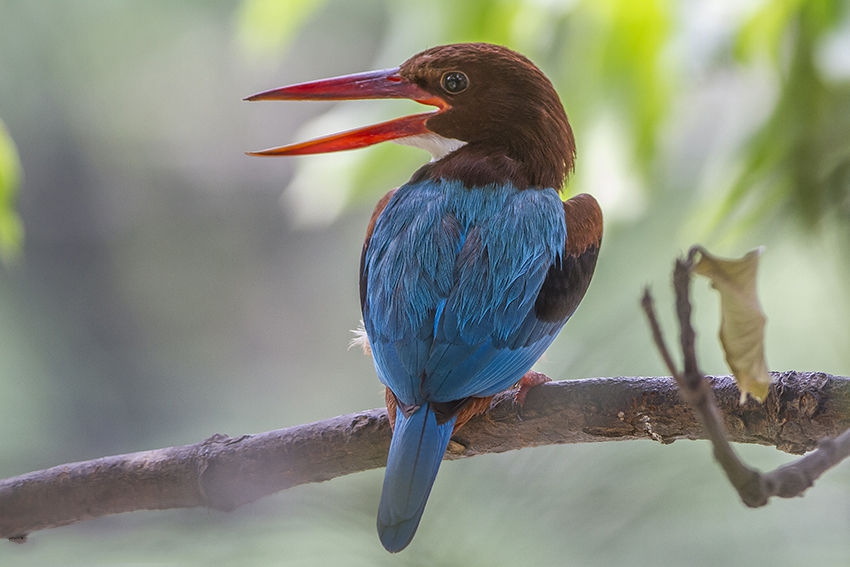| Citation |
BirdLife International 2017. Halcyon smyrnensis (amended version of 2016 assessment). The IUCN Red List of Threatened Species 2017: e.T22725846A119289544. http://dx.doi.org/10.2305/IUCN.UK.2017-3.RLTS.T22725846A119289544.en. Downloaded on 06 January 2020. |
Description |
JUSTIFICATION
This species has an extremely large range, and hence does not approach the thresholds for Vulnerable under the range size criterion (Extent of Occurrence <20,000 km2 combined with a declining or fluctuating range size, habitat extent/quality, or population size and a small number of locations or severe fragmentation). The population trend appears to be increasing, and hence the species does not approach the thresholds for Vulnerable under the population trend criterion (>30% decline over ten years or three generations). The population size has not been quantified, but it is not believed to approach the thresholds for Vulnerable under the population size criterion (<10,000 mature individuals with a continuing decline estimated to be >10% in ten years or three generations, or with a specified population structure). For these reasons the species is evaluated as Least Concern.
DESCRIPTION
The global population size has not been quantified, though in Europe, the breeding population is estimated to number 170-260 pairs, which equates to 340-520 mature individuals (BirdLife International 2015), with Europe forming <5% of the global range.
Trend Justification: The species is suspected to be increasing owing to its ability to colonise gardens and palm oil plantations. Its range has expanded into Sumatra but it appears to be absent from Singapore where it previously occurred (del Hoyo et al. 2001). In Europe the population size is estimated to be decreasing by at least 10% in 11.4 years (three generations) (BirdLife International 2015).
HABITAT AND ECOLOGY
This species uses a wide variety of habitats including dams, ponds, canals, creeks, swamps, mudflats, beaches with coconut palms and trees, mangrove edges, Nipa palm swamps, oil palm plantations, farmland, rice fields, large gardens, roadside trees, light industrial sites, bamboo forest and dry deciduous forest. It usually avoids dense forest except for clearings and is less common above 2,000 m (Woodall and Kirwan 2016). Breeding birds have been recorded in April and May in Europe, it lays in June in Egypt, April-May in Israel and Iraq, March-April and July in Pakistan, mainly April-July in India, May in Bhutan, April in Myanmar, mainly March-April in Sri Lanka, December-early August in Malaysia and March-April in Thailand and Sumatra (Woodall and Kirwan 2016). The species is considered monogamous, but the presence of three birds in some areas suggests possibility of communal breeding. The nest is usually excavated in an earthen bank of a ditch, stream, river, pond or road cutting and can also sometimes be in a termitarium, rock crevice, tree or mud hole. The nest-chamber is normally up to 15–23 cm wide and 13 cm high, at the end of an inclined tunnel 30–150 cm long. Clutches can be between four and seven eggs but usually five or six. The diet is widely variable and includes insects, scorpions, centipedes, snails, crustaceans, earthworms, fish, frogs and toads, lizards, chameleons, snakes, birds, voles, mice and squirrels. It hunts from a perch and will batter prey before swallowing it. Many populations exhibit partial short-distance migration, with seasonal changes in abundance, probably involving mostly juveniles (Woodall and Kirwan 2016).
THREATS
Little is known about the threats facing this species. Habitat degradation from factors such as irrigation, overgrazing, dam construction and erosion as well as are recorded in areas where the species in present (Ozturk et al. 2012) and may be a threat to this species. The use of pesticides may also be a problem (Ozturk et al. 2012). |


